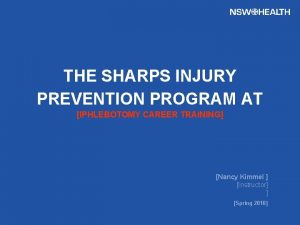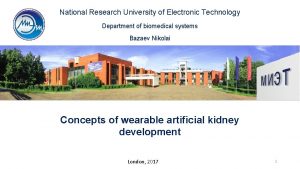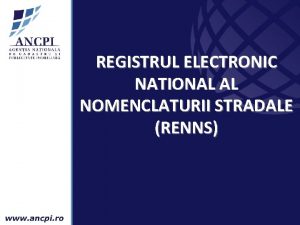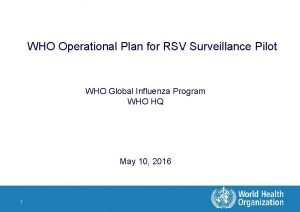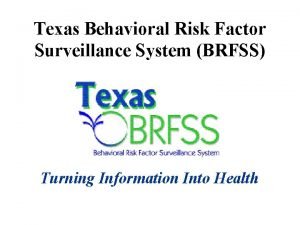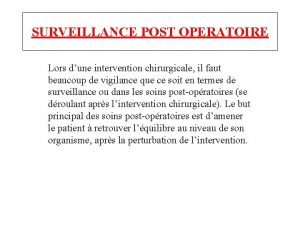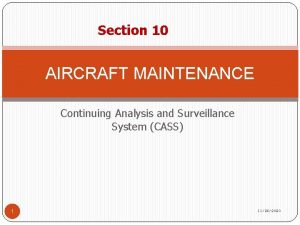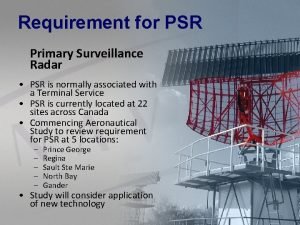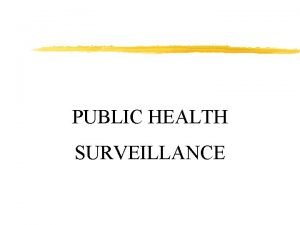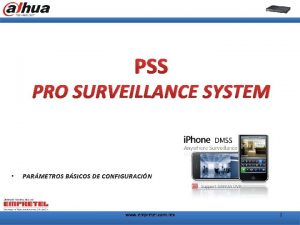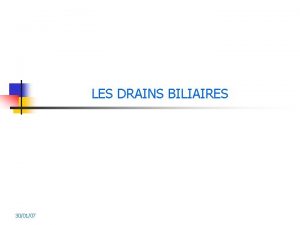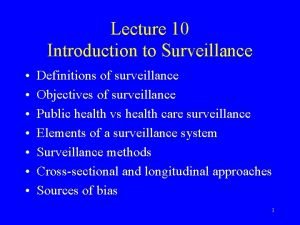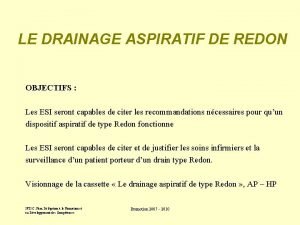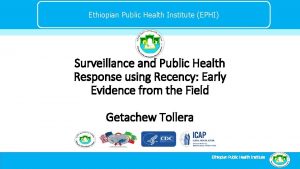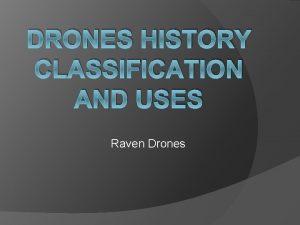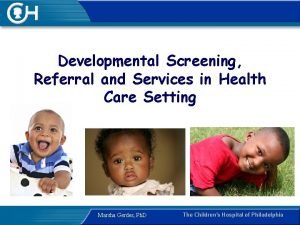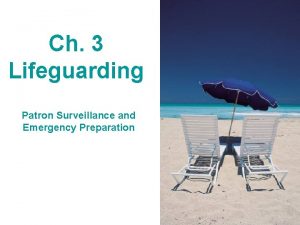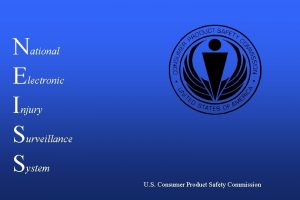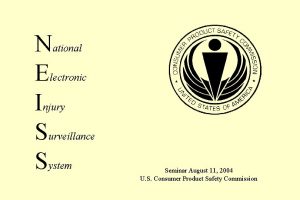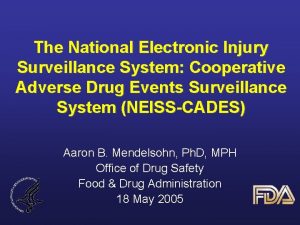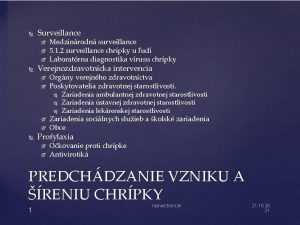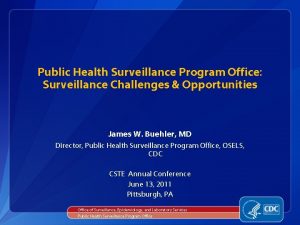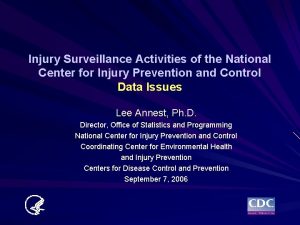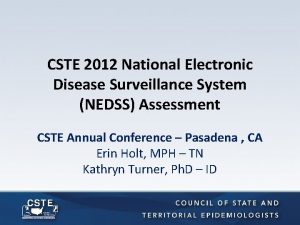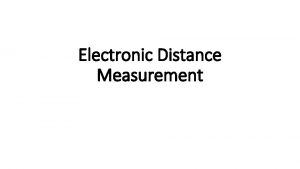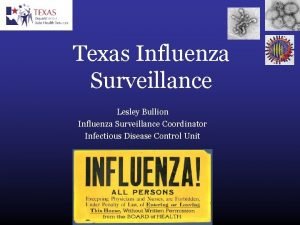National Electronic Injury Surveillance SystemAll Injury Program NEISSAIP




























- Slides: 28

National Electronic Injury Surveillance System-All Injury Program (NEISS-AIP) J. Lee Annest, Ph. D. Office of Statistics and Programming National Center for Injury Prevention and Control Centers for Disease Control and Prevention June 1 -2, 2005

Outline • Purpose of NEISS-AIP • Sample Design • Data Elements • Quality Assurance Methods • Data Reporting

National Electronic Injury Surveillance System (NEISS) • Operated by the U. S. Consumer Product Safety Commission (CPSC), Started October, 1978 • Monitor consumer product-related injuries • Nationally representative sample of 99 U. S. hospitals with > 6 beds and an ED • First time, injury-related visits

Components of NEISS • Ongoing ED surveillance • Special studies • Follow-up investigations

Ongoing ED Surveillance • Sampling frame updated every 10 years (last update 1997) • Captures 330, 000 consumer productrelated injuries annually • Timely access to data • Core data elements (age, sex, race/ethnicity of patient, two-product codes, primary body part affected, principal diagnosis, locale of injury incident, ED discharge disposition, narrative)

99 NEISS Hospitals Claremont, NH Pittsfield, MA Brooklyn, NY Patchogue, NY Staten Island, NY Bridgeton, NJ Lanham, MD Rockville, MD Very Large Hospitals Medium Hospitals Small Hospitals Children’s Hospitals Data Source: U. S. CPSC Santurce, PR

NEISS Sample Design Stratum Total ERVs Hospitals NEISS sample 1 1 -16, 830 3, 179 46 2 16, 831 -28, 150 1, 059 13 3 28, 151 -41, 130 674 9 4 41, 131+ 426 23 Children’s Various 50 8 --------------------------------------Total 5, 388 99

NEISS All Injury Program • Started July, 2000 • Nationally representative subsample of 66 NEISS hospitals with > 6 beds and an ED • First time, injury-related visits

NEISS All Injury Program • Approx. 500, 000 cases per year (@ $4. 00 USD per case) • Extensive training and quality assurance program with both automated and visual edits • Data on mechanism and intent of injury • Data available to public annually in the late summer of following year





NEISS All Injury Program Cause-of-Injury Data Elements • Mechanism (precipitating & immediate) - 22 categories (ICECI short version) - For transport (traffic-relatedness) - For MV-occupant (occupant status) • Intent of injury - Assault, suspected and confirmed (victimoffender relationship, context of assault) - Self-harm, suspected and confirmed - Unintentional/undetermined





Public Access of NEISS_AIP Data? • Web-based Injury Statistics Query and Reporting System (WISQARS) • NEISS AIP analysis files available through the Inter-University Consortium for Political and Social Research (ICPSR) at the University of Michigan • CDC fact sheets on the internet, MMWR, peerreviewed articles, state profiles

United States Fatal and Nonfatal Injuries http: //www. cdc. gov/ncipc/wisqars








Questions? Discussion time…
 071-com-0804
071-com-0804 Examples of intentional injury
Examples of intentional injury National institute for food and drug surveillance
National institute for food and drug surveillance An electronic is the electronic exchange of money or scrip
An electronic is the electronic exchange of money or scrip Electronic field production examples
Electronic field production examples Sharps injury prevention program
Sharps injury prevention program National research university of electronic technology
National research university of electronic technology Registrul electronic national al nomenclaturilor stradale
Registrul electronic national al nomenclaturilor stradale Who rsv surveillance
Who rsv surveillance Texas brfss
Texas brfss Surveillance postopératoire
Surveillance postopératoire Types of surveillance
Types of surveillance Surveillance fixateur externe
Surveillance fixateur externe Continuing analysis and surveillance system
Continuing analysis and surveillance system Reconnaissance and surveillance leaders course
Reconnaissance and surveillance leaders course Nav canada cfps
Nav canada cfps Types of surveillance
Types of surveillance Pss pro surveillance system
Pss pro surveillance system Drain de kehr pansement
Drain de kehr pansement Sentinel surveillance definition
Sentinel surveillance definition Surveillance definition
Surveillance definition Casser le vide d'un redon
Casser le vide d'un redon Reservoir surveillance definition
Reservoir surveillance definition Ephi ethiopia
Ephi ethiopia Sentinel surveillance definition
Sentinel surveillance definition Raven surveillance drone
Raven surveillance drone Developmental screening vs surveillance
Developmental screening vs surveillance Territorial reinforcement
Territorial reinforcement What does rid stand for in lifeguarding
What does rid stand for in lifeguarding





